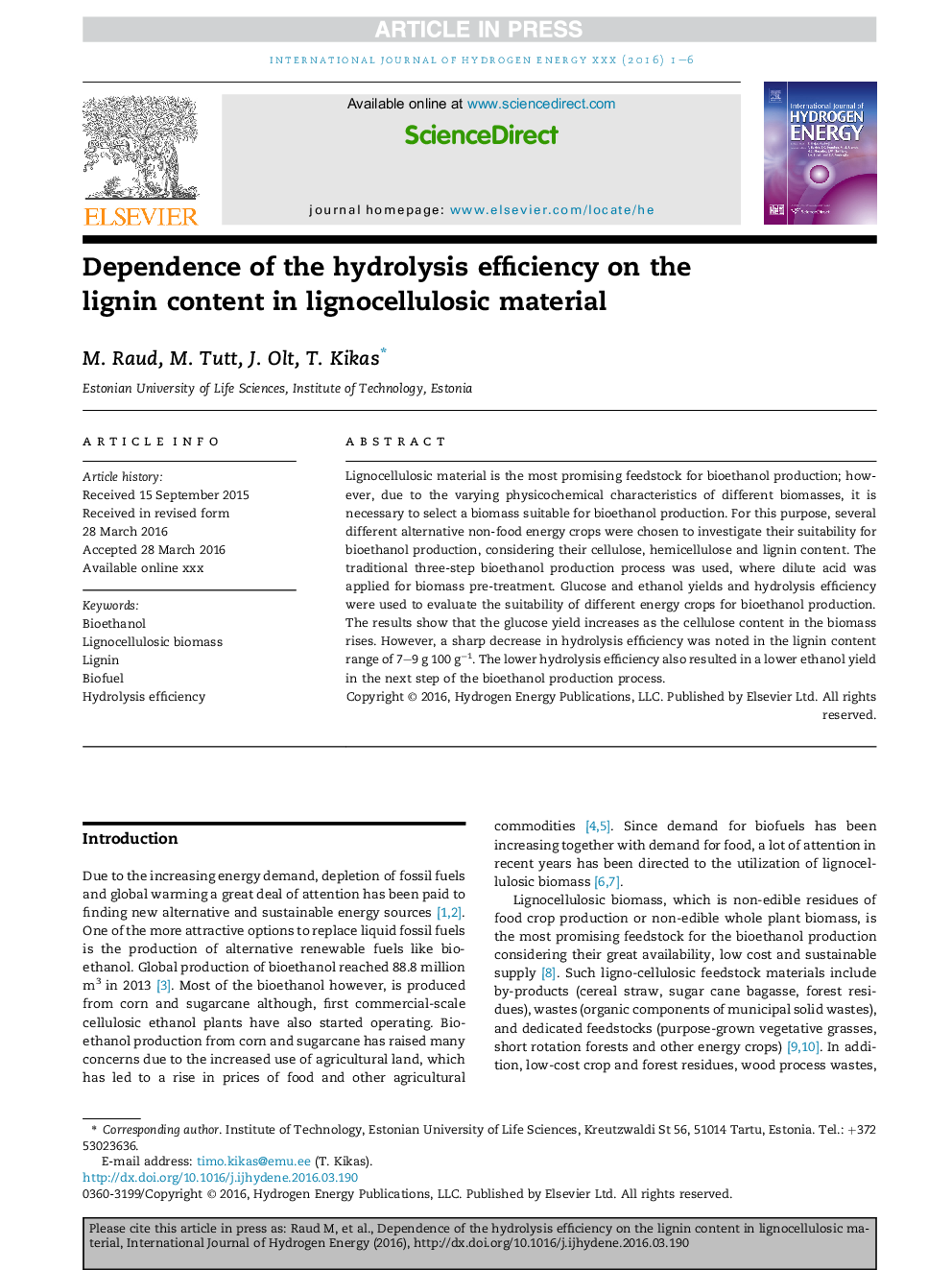| Article ID | Journal | Published Year | Pages | File Type |
|---|---|---|---|---|
| 5147642 | International Journal of Hydrogen Energy | 2016 | 6 Pages |
Abstract
Lignocellulosic material is the most promising feedstock for bioethanol production; however, due to the varying physicochemical characteristics of different biomasses, it is necessary to select a biomass suitable for bioethanol production. For this purpose, several different alternative non-food energy crops were chosen to investigate their suitability for bioethanol production, considering their cellulose, hemicellulose and lignin content. The traditional three-step bioethanol production process was used, where dilute acid was applied for biomass pre-treatment. Glucose and ethanol yields and hydrolysis efficiency were used to evaluate the suitability of different energy crops for bioethanol production. The results show that the glucose yield increases as the cellulose content in the biomass rises. However, a sharp decrease in hydrolysis efficiency was noted in the lignin content range of 7-9Â g 100Â gâ1. The lower hydrolysis efficiency also resulted in a lower ethanol yield in the next step of the bioethanol production process.
Related Topics
Physical Sciences and Engineering
Chemistry
Electrochemistry
Authors
M. Raud, M. Tutt, J. Olt, T. Kikas,
